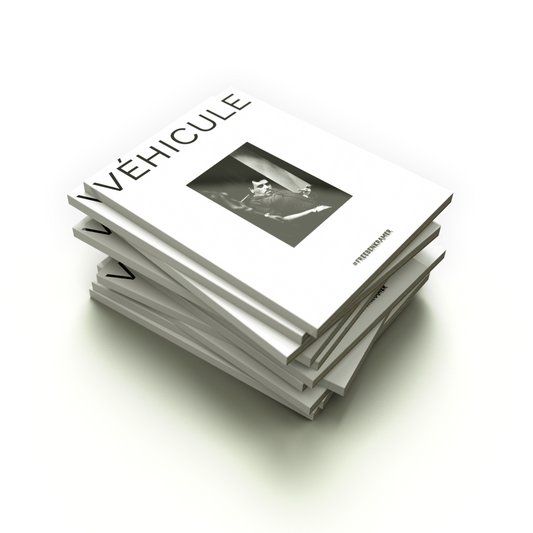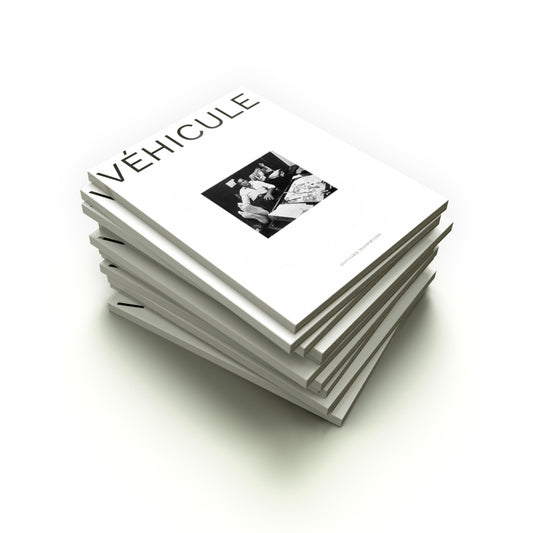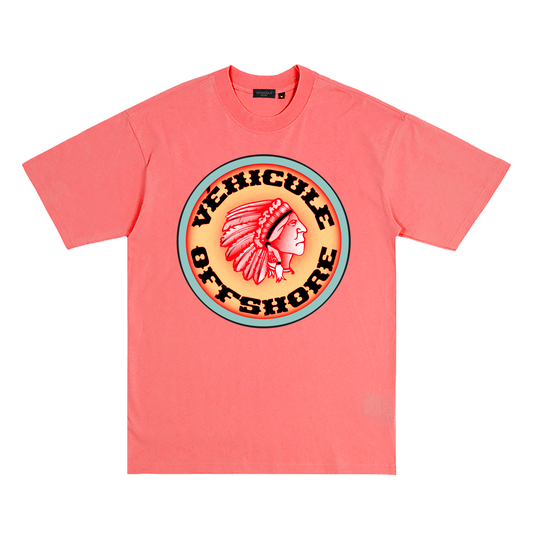Miami's Midcentury Hotspot
by Alfonso Muñoz Sahr
The history of lavish showbusiness was written for almost 30 years in the Latin Quarter, one of Miami's swankier nightspots known for its extravagant shows, where the most exclusive residents of South Florida and the darkest characters of the underworld once gambled, ate, drank, and laughed like there was no tomorrow. It was a gambler’s paradise!
Today, if we enter Palm Island and walk through the beautiful houses of the man-made island in Biscayne Bay, looking for the address where the Latin Quarter was located, we will find a children's playground. But more than half a century ago, this location was an altogether different sort of playground, and it was definitely not for kids. From the roaring 20s to the early 60s, this place used to be the meeting point for the most beautiful and exotic dancers from around the world, along with politicians, celebrities, tourists, and gangsters who just wanted to have a little fun.

Aerial view from 7000 feet of Biscayne Bay – Miami, Florida, 1927
In 1922, Ed Ballard, co-owner of the French Lick Casino, opened the Palm Island Club at 159 Palm Ave. as the first ultra-chic gambling Prohibition-era casino, where alcohol flowed freely, to have a tourist-only policy. The logic was that the cops would look the other way if only out-of-towners got fleeced.
This same year, just a thousand feet away – seven lots to be precise – Al Capone's mansion was built at 93 Palm Ave., where the Mob King moved in in 1928 and lived until his death in 1947. Capone plotted Chicago's infamous February 14, 1929, St. Valentine’s Day Massacre while living in the mansion.
Big Bill Dwyer, a New York bootlegger and ower of the racetrack Miami's Tropical Park, took over the Palm Island Club next. One show offered bandleader Earl Carroll's Vanities Revue, featuring, according to a Miami Herald reporter, a naked showgirl in a huge glass of champagne.
But when the police began to listen to everything that was happening on the premises and started to take an interest in the place, the Palm Island Club had to be reformed.
In 1939, refurbished and renamed, the place opened as the Latin Quarter, under the management of New York club magnate Lou Walters, father of TV personality Barbara Walters.

“No trip to Miami is complete without a visit to the "Latin Quarter", Palm Island's Smart Night Club”, reads the back of this mid-century postcard
Initially created in Boston in 1937 and later in New York City, Miami Beach’s version of the Latin Quarter was also the responsibility of Walter’s business partner, Elias M. Loew, the brilliant theatrical tycoon and owner of the vast Loew’s Theatres empire.
Modeled somewhat after the Moulin Rouge in Paris, decorated with exotic murals by Wilho H. Anderson, and embellished with cut-pile carpets, velvet on the walls, satin draperies, and fountains with colored water, the Latin Quarter prided itself in having the best and most beautiful dancers in the world.
Tryouts were held all across America and Europe, at the Palladium in London and Club Lido in Paris, to find that certain handful of girls who "sparkled and shined." They were billed as "Latin Quarter Dancers of Today, Hollywood Stars of Tomorrow."

Some of the beautiful showgirls of the Latin Quarter
Costumes were created for specific dancers to "enhance their best features," as the club’s PR department proudly stated. The typical joke between Latin Quarter dancers as they took the stage in their semi-nude costumes went something like, "Gee, when I think of the money I wasted on singing lessons..." and "When he says "show girls" he's not kidding".
The club, in its heyday during the 1940s and 1950s, was the spot to be. Glitz, glam, and some of the biggest names in entertainment Sammy Davis Jr., Sophie Tucker, Betty Grable, Frank Sinatra, and Tony Bennett all made appearances, among many others, on the handpicked and carefully blended shows offered sometimes three times a night.
Mr. Waters's formula for success in the nightclub industry was plenty of food and a luxurious ambience. "It's a popular fallacy in this business," he once said in an interview, "to say that your money is made or lost in the kitchen. The man who goes to a nightclub goes in a spirit of splurging, and you've got to splurge right along with him. My motto used to be that when the customer does not leave something on his plate, it's bad. I am always urging my stewards and chefs to give the customers more food than they expect."

There was a time when the Latin Quarter operated simultaneously in 3 different cities
Every night was different, and the artists varied between can-can dancers, singers, belly dancers, acrobats, comedians, drag performers, belly dancers, and high-kicking chorus girls. The club was even used a couple of times as a conference venue.
The Latin Quarter was a mid-century Mecca for big-name entertainers who performed for winter crowds of tourists, celebrities, and all the gangsters who gathered in Miami Beach from time to time.
1954–1955: New Year's Eve at the Latin Quarter
A dancer from this fancy nightclub, Mollie Fennell Numark, explained the situation with the Mafia at that time in an interview with the John Hemmer Archive: "We were told never to go down the palm tree-lined road from the club and heard Al Capone had lived there in a large mansion. It was probably now used by the Miami Mafia because they were everywhere. One of the American girls would disappear some nights, and we found out that was where she spent some evenings."
"One day I complained about having to mingle [with the patrons]. The next day, Lou Walters came into the dressing room, glaring in my direction. He threatened to send me back to England without a passage. We continued to eat our eggs and ignored the customers who were mafia types", expressed Numark.

Officers from the Dade County Sheriff’s Department led a raid in 1930 at Al Capone's house in Miami Beach
At the end of the 1950s, Miami's nightlife began to change, and the Latin Quarter ceased to be the most coveted meeting point. The club really flourished in the days when the hotels were forbidden by city ordinance to have nightclub shows and the independent clubs had the field all to themselves, so when hotels were finally allowed to hold shows of this kind, the Miami Beach nightlife migrated to Millionaire’s Row on upper Collins Avenue.
Huge new oceanfront hotels produced dazzling floor shows and competed against each other for the official title of Hotel of the Year. New Nightspots started booking the top bands, singers, and comedians for the season and packed in the tourists year after year. So too did Lou Walters. After the Latin Quarter, Walters moved his show to the Carillon, 1959’s Hotel of the Year, where his elaborate productions were considered the best on the beach for several years.
One by one, the independent nightclubs started closing their doors. Some say it was the competition for tourist dollars that finally killed off the independent clubs in Miami Beach during the 1960s. Others say it was the evolution of jet travel to distant and more exotic destinations that did them in. Was it perhaps the reputation of these clubs for attracting members of organized crime?

Matchboxes given to club visitors
On August 27, 1959, the Latin Quarter went up in flames, and the fire caused $500,000 in damage. The club never reopened. Its blackened, battered remains sat tattered until the city ordered their removal in 1968 and turned the place into a family park.
Was it an accident? Was it intentional? Did the Mafia have something to do?
The firemen said that probably a boat moored in the foreground may have started the Latin Quarter fire; they theorized that shorted wires from sinking craft caused the blaze.

The club on fire and the boat that supposedly caused the emergency
After the fire, E. M. Loew, manager of the nightclub, said he intended to rebuild the place immediately. "It won’t be just a cozy club, but a bigger and better club," he expressed. His comment came in the face of threatened lawsuits by the Palm-Hibiscus-Star Island Association to condemn the site and turn it into a park.
In 1960, the zoning law said that any building in a non-conforming area may be rebuilt if fire destruction is not more than 50%. "That puts Loew in a box," said William T. Kruglak, president of the Palm-Hibiscus-Star Island Property Owners Association. "If Loew files for 100% damage in his insurance claim—and he'd be crazy not to—we'll get a deposition and find out about it," said Kruglak.
The neighbors never got along with the club's co-owner, E. Loew, as he would not let the kids use the club's property to play ball when the club was not in operation.

Some neighbors also didn’t like that Al Capone lived there, so why would they want all the other mafiosi who came to visit walking around their houses?
As a neighbor, Capone took special liberties by not following the home association's rules and regulations. Examples were that his 25-foot boat dock exceeded the 8 feet allotted. His pool was one of the biggest ones on the island at the time. Talk of all-night parties, orgies, and even gunfire that were heard by neighbors Those who rented nearby were quick to pack up and leave.
The mob king tried to ingratiate himself by sending out invitations to a party at his home. Some came, and many refused. The ones that did attend quickly had a second opinion of the man. Those who didn't attend continued to cry foul. Their persistence led the authorities to harass Capone, arresting him many times for simple vagrancy. The Palm Island home was once raided, and alcohol was confiscated.
The club survived a dizzying array of owners, and even Al Capone once had a piece of the action.

Several firefighters were injured trying to control the flames that erupted from the Palm Island nightclub
Whatever ended with the life of the Latin Quarter can never erase the fact that, for a brief period fifty years ago, 159 Palm Island Drive was the hottest address in American nightlife.
The Palm-Hibiscus-Star islands have become, since the 1960s, a quiet community tucked away between two bustling cosmopolitan cities. A safe and quiet place to raise a family or retire.
The islands are rarely in the news for anything other than their beauty.
Read more about Miami's history in VÉHICULE.








